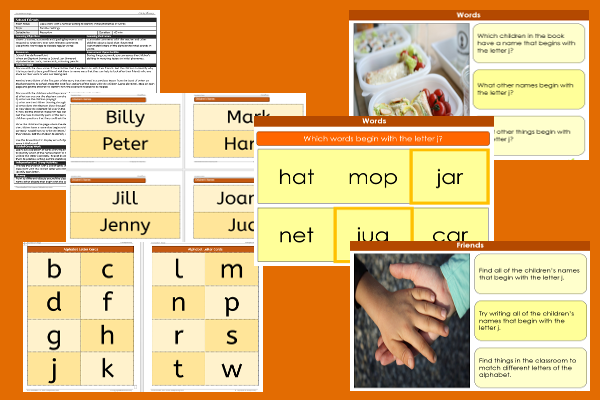Lesson Two – School Friends

This literacy teaching pack for the Foundation Stage gets the children to practise using a story with a familiar setting that takes place in a school location to identify the initial phonemes that can be used to spell matching groups of words.
The class can select and match letters of the alphabet that can be heard at the start of different cvc words and the character names in a narrative story.
Download this teaching pack including a lesson plan, classroom activities and an interactive presentation to practise using a story with a familiar setting that takes place in a school location to identify the initial phonemes that can be used to spell matching groups of words
Activities in this teaching pack include sets of cards to identify initial phonemes for different names that can match the corresponding letters of the alphabet and link each of the consonant letters of the alphabet to different objects with the same initial sounds.
The interactive presentation gets the children to explore how to use a story with a familiar setting to identify initial phonemes of matching groups of words.
This lesson is part of a literacy scheme of work to get the children to read and respond to a story with a familiar setting and identify initial phonemes in different words based on When an Elephant Comes to School by Jan Ormerod. There are teaching activities for shared learning, differentiated worksheets to support independent learning and interactive presentations to introduce concepts and key skills.
-

Garden Measurements
Practise using vocabulary words and non-standard measurements to find and compare the length of different things that can found in a garden
-

Family Holiday
Identify and recount events and experiences to describe what happened when on holiday at the seaside using sentences in the past tense
-

Money Shopping
Investigate and model some of the number skills that need to be used when working with money on a shopping trip
-

Supporting Others
Explore how to build strong and positive relationships with other pupils at school and family members at home through different situations and scenarios
